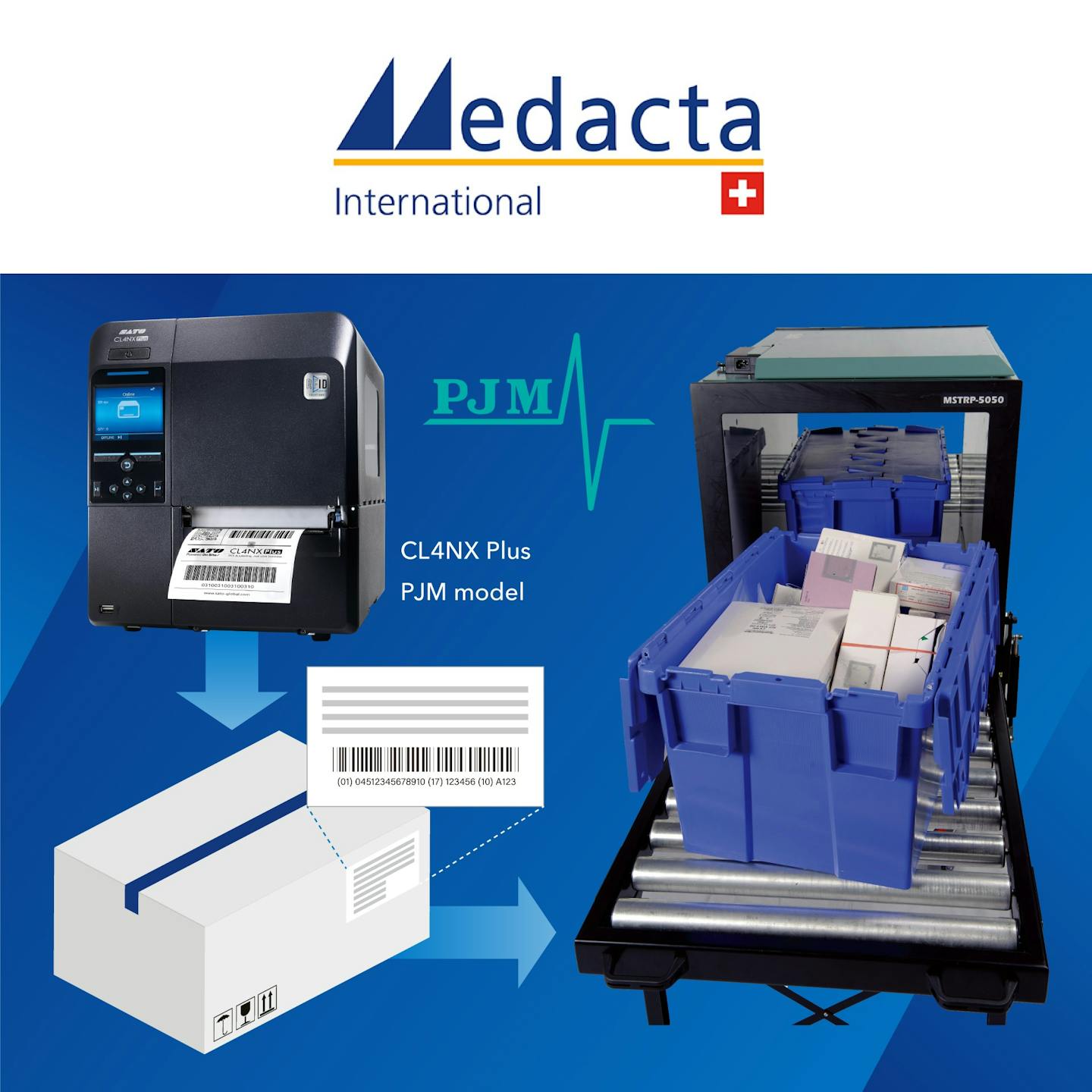SATO Europe GmbH Italy, an industry leader in RFID technology and auto-ID solutions, is proud to announce a ground-breaking partnership with Medacta, a Swiss-based pioneer in orthopedic implants, and Italy-based software integrator SAIT srl. This collaboration marks a significant milestone in the implementation of SATO's PJM RFID solution into the healthcare sector, significantly improving Medacta's operational efficiency and setting a new benchmark for accuracy and innovation in orthopedic care.

Radiation-hardened ISO/IEC 18000-3 PJM RFID (HF) tags for item-level identification of orthopedic implants.
Medacta faced challenges in managing resources for orthopedic surgeries. To improve efficiency, the company turned to SATO's PJM RFID technology as a replacement for their existing barcode system, which was laborious and time-consuming. SATO's technology is designed to resolve such challenges.
SATO's advanced PJM RFID technology has been a game-changer for Medacta. Unlike other UHF and HF tags, SATO's radiation-hardened D-chip memory allows for tagged products to be sterilized via gamma irradiation, which would render most tags useless. This step makes it possible to tag products at a single location—the factory—and track them across all Medacta facilities worldwide throughout their lifetime.
The open standard ISO 18000-3 for HF RFID phase jitter modulation (PJM) utilizes is designed for high-speed bulk conveyor-fed item-level identification. This technology enables the batch reading of multiple tags densely stacked in various configurations in medical flight cases with unparalleled precision. This efficiency is achieved by avoiding double readings of products, leading to a remarkable improvement in operational efficiency at Medacta's headquarters, more than 30% since the implementation, resulting in a reduced staffing cost.
This shift has resulted in a 100% accuracy rate in inventory management. In international markets where the technology has been rolled out, including multiple countries in Europe, including Italy, the United States, and Japan, it has achieved efficiency improvements ranging from 5% to 15%.
In the future, the tagging of loan kits could unlock even greater efficiencies and accuracy if expanded to more to more touchpoints across the vendor intralogistics system. Currently, gate readers are employed for the inbound and outbound stocktakes of individual products at Medacta’s factory and warehouses.
Head of SATO Europe, Laurent Lassus, expressed, "The successful deployment of this technology was significantly facilitated by SAIT, SATO's trusted Italian partner. Their invaluable on-site approach was instrumental in seamlessly integrating the technology into Medacta's existing operations, ensuring a smooth transition and effective implementation."
The deployment of SATO's PJM RFID technology, including the D-Series labels’ existing NFC capabilities, has been a game-changer for Medacta.
The NFC feature, which is under consideration for wider implementation in the future, could allow the scanning of implants quickly without the need for specialized hardware, thereby offering another layer of efficiency. The collaboration with SATO and SAIT has been crucial in driving this transformation, showcasing the impact of teamwork in automating tasks on-site.
